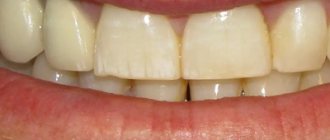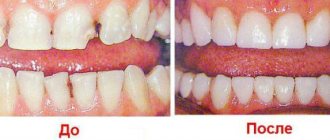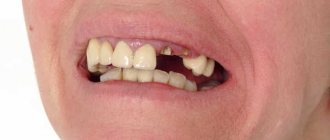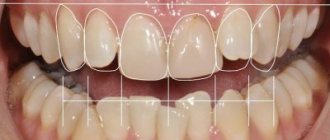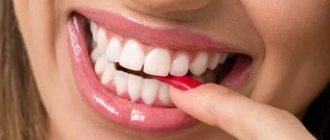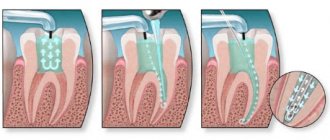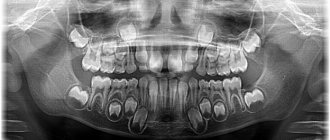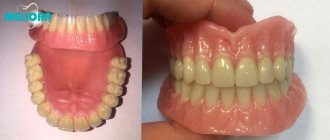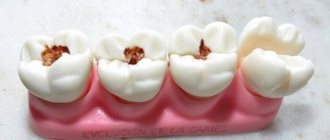New technologies are constantly emerging in dentistry, thanks to which higher-quality dental restorations become possible. These innovative techniques include dental modeling. It allows you to obtain perfectly matching prostheses for a specific patient. With the help of modeling, it became possible to accurately reproduce the anatomical forms and functional features of the dentition. The result is high aesthetics of the entire oral cavity.
There are two types of dental modeling:
- The direct method is diagnostic imitation using wax.
- The indirect method is modeling, so to speak, in full size.
Indirect modeling steps
Indirect modeling takes place in several stages:
- First of all, impressions are taken from the upper and lower jaws. This is done using silicone, and the most important thing is that it is of high quality. At the same stage, the jaws are fixed in the usual closed state with the preparation of the bite ridges and registration taking into account the face bow.
- Working with a specific device that allows you to obtain an accurate model of the movement of the lower jaw and adjust all movements of the masticatory apparatus at the time of its functioning. If the bite is low, the device, taking into account facial characteristics, calculates how much it needs to be raised.
- Installation of the resulting silicone model on a plaster base in an article (special device) for analysis. At this stage, the dental technician takes into account the wishes of the patient and the doctor regarding functionality and aesthetic data. Next, a wax model is made, shown to the patient and, if necessary, adjusted.
If all of the above stages pass without any difficulties, then a permanent prosthesis is made in the laboratory.
Flaws
When it comes to the direct method of wax modeling, first of all, it is necessary to remember that this method requires a long stay in the dental chair.
It is a long stay in one position that causes patients to feel pain in the jaw and neck.
The most obvious disadvantages of this method are:
- patient fatigue;
- the likelihood of getting a burn to the mucous membrane due to heated wax or instrument;
- low accuracy of the model in the interdental space;
- the doctor must undergo special training for this procedure so as not to lose his professionalism;
- if the casting was unsuccessful or the cast was deformed, then the procedure will need to be carried out again;
- a long process of removing models, especially if the inlay cavity occupies several teeth.
Only through correct and long-term fixation of the mass can an accurate and high-quality impression be obtained. The final result depends not only on the quality of the materials used, but also on the level of professionalism of the doctor.
Our team of doctors
Maxillofacial surgeon, Implantologist
Bocharov Maxim Viktorovich
Experience: 11 years
Orthopedist, Neuromuscular dentist
Stepanov Andrey Vasilievich
Experience: 22 years
Endodontist, Therapist
Skalet Yana Alexandrovna
Experience: 22 years
Orthopedic dentist
Tsoi Sergey Konstantinovich
Experience: 19 years
Endodontist, Therapist, Orthopedist
Varvyanskaya Anastasia Andreevna
Experience: 6 years
Dentist-orthodontist
Enikeeva Anna Stanislavovna
Experience: 3 years
Peculiarities
In dentistry, modeling teeth using wax is called Wax-up technology. Dentists use two methods of such modeling. One is the formation of a sample of the future tooth on stumps (gypsum bases), and the second is a combination of Wax-up and Mock-up techniques, creating a composite model directly in the mouth based on wax.
This is a mandatory procedure when performing orthopedic correction of defects in the oral cavity. Models need to be made for many purposes. First of all, it is necessary for the doctor to draw up a plan for the upcoming restoration. The wax model serves as a test material, using it the orthopedist and technician establish the method of restoration of the damaged tooth, discuss the scope of further work and possible difficulties in prosthetics.
If you have a model, it will be easier for the patient to explain all the features of the treatment and agree on the final appearance of the teeth. Carrying out this work will allow us to eliminate all inconsistencies and inaccuracies at the initial stage of prosthesis manufacturing.
Wax is the most suitable material, which lends itself well to processing, and after it cools, it quickly and easily takes the desired shape. To perform such work, it has excellent characteristics, namely:
- quite flexible;
- dense;
- lasting.
Thanks to these properties, the technician is able to very accurately recreate the required dimensions of the tooth so that the prosthesis made is as similar as possible to his own. Wax modeling of teeth is necessary to work out the nuances of future work to restore the functionality and aesthetics of the dentition.
Stages of direct modeling
Direct modeling is carried out by the doctor directly in the patient’s oral cavity. In this case, it is possible to accurately determine the appropriate shape of the prosthesis. This procedure can be figuratively compared to trying on a dress:
- The doctor makes impressions of the teeth using silicone, where special attention is paid to the palatal part, without which it is impossible to obtain a full-fledged impression. The silicone impressions are filled with a composite mass, usually a different color from the teeth, and then the copy is placed on the patient’s jaw.
- The resulting impression is taken and excess composites are removed, and adjustments are made if necessary.
- Next, the patient’s teeth are cleaned of plaque using special accessories; they are not sawed or ground down, thereby maintaining their integrity.
- The base shade of enamel is applied to the template itself, then the remaining layers are applied one by one. Thus, the tooth is restored taking into account all the details of its surface. The structure is restored gradually, and finally the corresponding shade of enamel is applied.
When the surface of the model is completely dry, it is processed mechanically. The dentures are treated with a specific glue and attached to the prepared model. The patient is allowed to spend a certain time with temporary prostheses, thereby observing his own sensations and deciding whether further correction is needed. In the meantime, the doctor will be able to study the reactions of the lower jaw joint. The technician is allowed to make several models at the same time, then the patient has a chance to choose the most optimal option.
If the client does not make any complaints, then the resulting models are sent to the laboratory for the production of permanent prostheses. Direct restoration is especially suitable for patients who need to improve their bite and those who have severe enamel wear. Including models, prosthetics on implants is not complete.
Reviews
This procedure allows you to see the finished result at an early stage of the formation of the dental structure, which is important for timely adjustment.
If you have your own experience in this matter, we will be glad to see your feedback.
If you find an error, please select a piece of text and press Ctrl+Enter.
Tags wax modeling of teeth fixed dentures
Did you like the article? stay tuned
No comments yet
Advantages of modeling
Artistic modeling of teeth can do a lot - from deepening or protruding a tooth to correcting the shape of the entire dentition. This type of prosthetics has many advantages:
- Demonstration to the patient of a visual, final result.
- Elimination of any defects at the very beginning.
- Absent future discomfort.
- Quickly addictive.
- The adjacent teeth are not damaged.
- All wishes of the patient are taken into account.
- It is possible to adjust the model.
Completely finished models can only improve the final result of the restoration if they are of good quality. Therefore, it makes sense to contact the highly qualified Implantmaster clinic in Moscow, where professionals work exclusively with modern equipment, which guarantees high quality of the final result.
Author:
Technique
The direct method is often used to create models. The algorithm of actions is as follows:
- The tooth that requires restoration is covered with cotton rolls, the bottom and walls are specially moistened with a swab.
- The wax heated to the required plastic consistency is pressed into the cavity requiring correction. The doctor who will perform this procedure must take into account the anatomical features of the tooth and its location between the other teeth.
- When the wax hardens, it is removed with metal wire from which the pins are made. They will serve as a kind of handle for removing the model.
- The ends of the pin are heated and clearly inserted into the model. To do this, the doctor leans on the adjacent teeth so that there is no unnecessary vibration.
- After complete hardening, the structure is removed.
If the entire procedure was performed correctly and from high-quality material, then it easily comes out of the tab area.
Watch the video for the procedure.
Indications
Wax-up technology is recommended and used for any indirect aesthetic restoration, namely for crowns, lumineers, bridges, veneers.
Thanks to the creation of wax models, the final result from the production of these products is calculated as accurately as possible.
The technique is also applicable for correction of parameters (shape and size) of the crown part, as well as for complete reconstruction of the dental form. In the second option, the technology is used:
- in the production of temporary orthopedic products on samples with prepared units;
- for planning the placement of removable and non-removable systems;
- when determining the amount of teeth grinding;
- to evaluate the result of occlusion correction on a diagnostic model;
- when planning the exact placement of implants with immediate subsequent loading.
Wax modeling can also be used for orthopedic correction of defects in the location of teeth, for example, when correcting the progenic conformity of the jaws.
When is stump restoration required?
It is necessary to give the remaining tissues of the upper part of the tooth the desired shape in order to subsequently successfully secure the prosthesis - a crown or bridge. A properly shaped stump is required:
- After endodontic treatment, when tooth restoration with a filling or inlay is undesirable.
- In case of severe destruction of the crown, when restoration by other methods is impractical.
It is important to provide the crown with reliable support. In this case, the tooth root can be preserved for a long time.
Main advantages for you:
COMFORT.
No more impressions needed! Nobody likes this stage. No need to sit with a spoon and silicone mass in your mouth. Now, instead, the doctor scans your mouth using an intraoral scanner—in just a few minutes. And a very accurate virtual “cast” is obtained.
SPEED.
Never before have you been able to get a new tooth so quickly! Previously, you had to wait 2 weeks for a dental technician to make you a crown, veneers or inlay. Now the whole process will take only a few days - for complex, large prosthetics. And 1 day - for a small amount of work (single restorations).
ACCURACY.
Much of the manual labor is replaced by smart digital equipment, meaning distortion is kept to a minimum. You receive exactly the restorations that you originally planned with your doctor.
AESTHETICS.
We work with the most modern and aesthetic materials. Our restorations are indistinguishable from your teeth.
PRICE.
We implement a policy of comfortable prices for CAD/CAM dentistry. The cost of digital restorations in our clinic is no higher than the price of conventional (analog) crowns, veneers or inlays.
SPECIAL OPTION!
Test drive a smile. We will print a teeth model (in just 1 day) on a 3D printer. You can see what your smile will look like before treatment begins.
Preparation for a stamped crown
As you probably know, the thickness of the cap for a stamped crown is 0.3 mm. The volume of preparation will be the same. The tooth is shaped into a cylinder, removing 0.3 mm in the neck area (where the ledge is created). In the area of the equator, they are prepared to create a cylindrical stump. The occlusal surface is also prepared by 0.3 mm, and the relief of the cusps is approximately preserved.
Purpose of application
The need for Wax-up is due to the following factors:
- Reproduction of dental units from wax is the starting stage of restoration work. It is required for planning future work of dentists. Wax impressions help to track the individual characteristics of the structure of teeth and avoid errors during implantation.
- Calculation of the cost of upcoming dental procedures.
- Temporary prosthetics. The specialist takes samples for the production of intermediate prosthetic restorations made of plastic. The technology is used when additional time is needed to create fixed prostheses.
Advantages
Despite the fact that the use of the Wax-up technique for orthopedic correction of defects in the oral cavity requires a specialist to perform additional work that requires the expenditure of material resources and time, doctors advise not to refuse to perform it for a number of reasons:
- The procedure allows you to prevent inaccuracies in calculations during the production of implants, as well as eliminate identified errors at the first stage.
- Manifestations of unpleasant sensations and discomfort upon completion of prosthetics are excluded.
- The duration of adaptation to new artificial units is reduced to a minimum .
- A person can examine in detail the wax model of the future prosthesis , clarify some of the nuances that interest him, thereby eliminating misunderstandings between the patient and the specialist regarding the vision of the result.
- The simulation does not affect healthy neighboring units and does not damage them.
- The preparation of supporting teeth is performed in a gentle way , which also eliminates discomfort and unpleasant sensations.
An important advantage is the type of material used in modeling. Wax is an inert natural material that does not cause adverse reactions in the body.
What are ultraneers and how do they differ from other overlays?
In this publication you will find reviews about componers.
Here https://www.vash-dentist.ru/protezirovanie/nesemnyie-p/viniryi-np/restavratsii-zubov-e-max.html a detailed description of E Max veneers is offered.
Preparatory process
Before doing wax modeling of teeth, you need to complete a number of appointments, one of the first is conducting diagnostics of the oral cavity. If necessary, an x-ray and computed tomography of the jaw should be performed. It is also noted that in case of oral diseases, it is necessary to undergo a course of treatment. Don’t forget to sanitize and follow hygiene rules.
Only after a full examination and treatment course has been carried out, the doctor begins to create impressions.
Contraindications
Modeling using wax is a painless and completely safe procedure for humans. The technique does not cause any unpleasant sensations or discomfort and does not involve the use of painkillers.
Since only natural raw materials – beeswax – are used to build models, the technology has only one contraindication for use. Patients who experience an allergic reaction to honey itself or beekeeping products should not undergo this procedure.
Important! If there is a reaction to honey, the patient is obliged to warn the specialist about this. He will select a different, safer method of prosthetics and restoration for him.
Material requirements
To model teeth, wax of types 1 and 2 is used, the first being appropriate for the direct method, the second for the indirect method. This is due to their quality characteristics. The second type of material is of lower quality, but this property does not affect the result of the model at all. The first type of wax is perfect for making an impression directly in the patient’s mouth.
There are a number of rules regarding the selection, preservation and use of this material. One of them concerns the fact that in order to obtain greater contrast, it is recommended to use waxes of different colors. After cooling, the material should not crumble and must be rigid. The quality of the impression is negatively affected by the presence of crumbs in the wax mass during the heating process. If there are particles or flakes in it, then the surface will not be smooth, but embossed. It should also be borne in mind that when scraping the material should not form chips or fall off in pieces. Exceeding the permissible storage period has a negative effect on the quality of wax.
Accurate and high-quality anatomical modeling of teeth depends on the correct selection of material for a specific method.
Direct stamping
The sleeve is put on the second stamp and stamping begins. It can be performed using one of two methods: the Parker method or the MMSI method.
Stamping of crowns using the Parker method (external method)
They are carried out in a special Parker apparatus. The device consists of a hollow base and a cylinder included in it.
The cavity in the base is filled with moldin (special clay). The sleeve, put on the stamp, is immersed in the mold (crown down), the cylinder is inserted and hit hard with a hammer. From impacts, the mass becomes compacted and evenly presses on the sleeve. The stamped crown is removed by melting the stamp in a melting spoon.
Then the crown is boiled in hydrochloric acid for 1-2 minutes, annealed and cut with crown scissors along the recess line. The edges of the crown are smoothed with carborundum roots. The accuracy of trimming is checked on a plaster stamp blank.
Stamping using the MMSI method
(MMSI - Moscow Medical Dental Institute)
In this method, instead of a mold, a counter stamp made of low-melting metal is used. This counter-stamp is obtained as follows: the second stamp is wrapped with a layer of adhesive plaster. Low-melting metal is poured into a special cuvette (it narrows downwards, turning into a cone). Until it hardens, the stamp is completely immersed in it. Then the resulting form is removed from the cuvette (a stand is placed on the ring and hit with a pestle). And they split it in half so that the stamp can be removed from it. The wax is then removed from the stamp and the crown is placed. Place in the original location in the counter stamp. The counter-stamp is placed in a cuvette and the crown is stamped with hammer blows. As a result, the counter-stamp enters the cuvette and presses on the walls of the sleeve. Stamping is completed when the counter-punch touches the bottom of the sleeve. Everything else is the same as in Parker's method.
Price
Installation of certain types of orthopedic structures in the oral cavity using wax modeling is an expensive dental service. The high cost of the technology is explained by the price of the starting material, the use of special equipment and the high accuracy of the process.
The approximate cost of creating a wax model for 1 unit of dentition varies from 1200 rubles. up to 1500 rub.
The cost of the service may increase if several units need to be restored at once or the defect being corrected is very complex.
The final figure for the use of wax-up modeling is usually announced by the doctor after a visual examination of the oral cavity and examination of x-rays.
The video provides additional information on the topic of the article.

